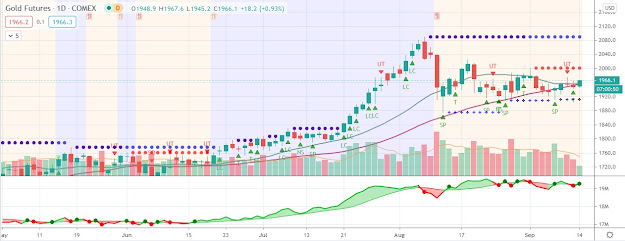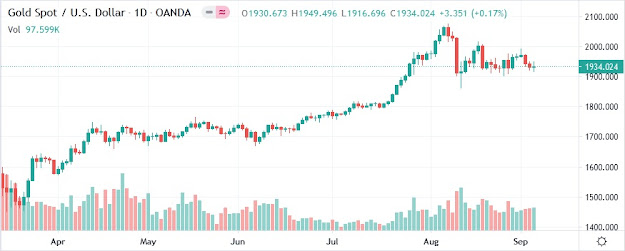Demand for physical gold continues to be very, very strong. China was off all this week
 The gold price held firm near $1,638 per ounce closing this week despite the better than expected U.S. employment report. The spot price of gold climbed to as high as $1,665.20 in overnight trading and remained in positive territory after the release of the September non-farm payrolls report. Silver prices headed north alongside the gold price, advancing $0.59, or 1.8%, to $32.59 per ounce.
The gold price held firm near $1,638 per ounce closing this week despite the better than expected U.S. employment report. The spot price of gold climbed to as high as $1,665.20 in overnight trading and remained in positive territory after the release of the September non-farm payrolls report. Silver prices headed north alongside the gold price, advancing $0.59, or 1.8%, to $32.59 per ounce. The September jobs report showed that non-farm payrolls increased by 103,000 in September, well above the 60,000 consensus estimate among economists. The unemployment rate remained at 9.1%, in-line with expectations. The August non-farm payrolls figure was revised higher by 57,000, which also fueled optimism that the U.S. labor market is not deteriorating as significantly as many economists and investors had expected.
Commenting on the outlook for the gold price, MKS Finance head of trading Afshin Nabavi stated, via Reuters, that “What you’re seeing is demand for physical gold continues to be very, very strong. China was off all this week. They’ll be back next week and I presume demand will only increase, so I think that is why the market has held so nicely around this $1,600 mark.”
Earlier this year the gold market “was extremely bearish in the dollar and extremely bullish on Gold,” Nabavi added. “It’s not a one-way street all the time. We needed a correction and don’t forget we are talking about less than $300 in a commodity that was priced close to $2,000.”
He went on to say that “I still wouldn’t mind seeing it have a bit more of a correction on the downside first to clean up some of the spec length over the market.” Looking toward the end of 2011, Nabavi predicted that the gold price will resume its march toward $2,000 per ounce.



Comments
Post a Comment